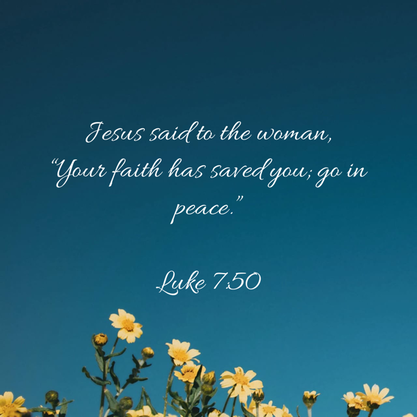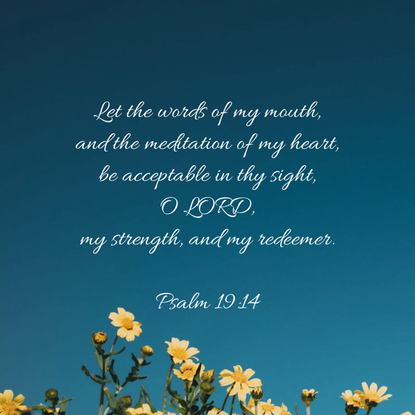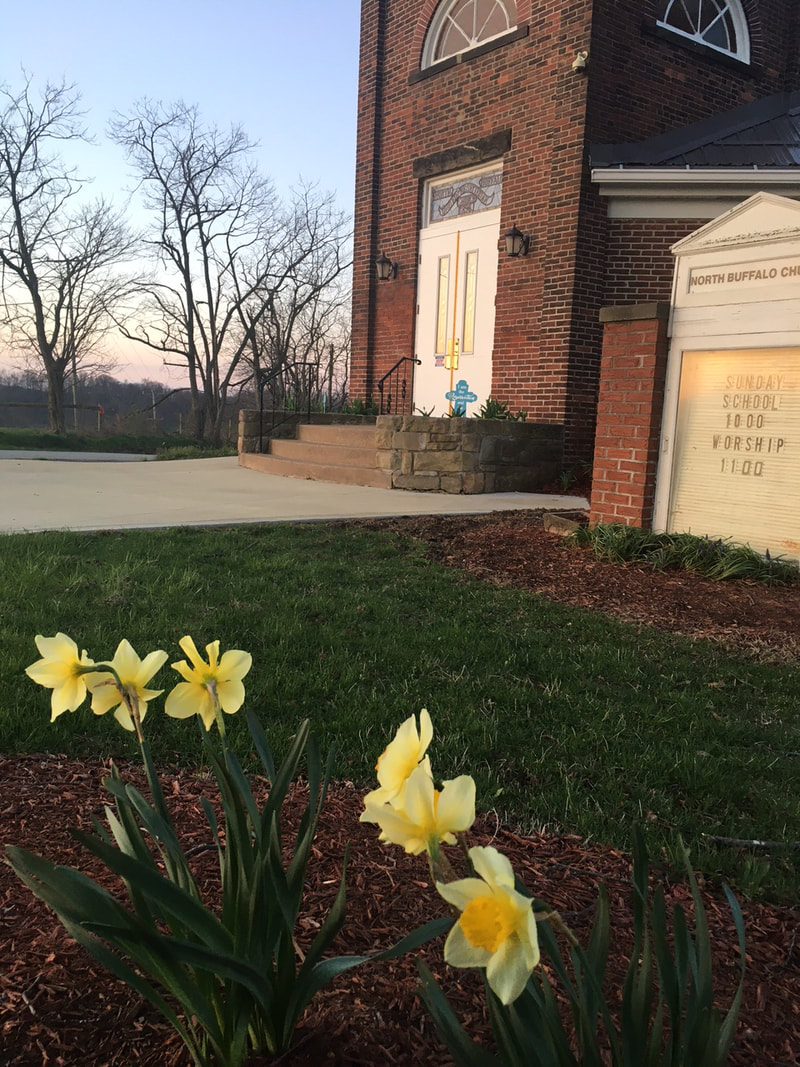|
Good morning! We're so glad you decided to join us today! When we meet for Sunday School, we take some time to share our joys and concerns. Take some time to think over the past week, and any prayer requests you might have. If you would like, you can share them in the comments of today's lesson. When you are ready, use the prayer (source) below to get started. O God, we thank you for this earth, our home; for the wide sky and the blessed sun, for the salt sea and the running water, for the everlasting hills and the never-resting winds, for trees and the common grass underfoot. We thank you for our senses by which we hear the songs of birds, and see the splendor of the summer fields, and taste of the autumn fruits, and rejoice in the feel of the snow, and smell the breath of the spring. Grant us a heart wide open to all this beauty; and save our souls from being so blind that we pass unseeing when even the common thornbush is aflame with your glory, O God our creator, Who lives and reigns for ever and ever. Amen. This week's lesson is on Revelation 7:9-17. Three things should be observed by careful readers. First, Revelation combines elements of ancient letters, prophetic, texts and apocalyptic literature. It is considered partially a letter because how the book opens with a greeting and is addressed to specific churches. Revelation is considered a form of prophecy given to John in order that he might declare the “testimony of Christ“. Revelation is considered apocalyptic text. A proper understanding of Revelation requires recognizing the imagery and language of apocalyptic literature. Second, the book of Revelation is loaded with allusions to the Old Testament and assumes the audience’s familiarity with their source. Third, Revelation emphasizes worshiping God. The text is filled with poetic scenes of worship. Each one makes claims about who is worthy to be worshipped in Heaven and on Earth. Revelation calls the people to worship ’Our God, who sits on the throne “ and “ the Lamb” Today’s passage continues John’s vision of Heaven. Several startling events have occurred: the glorious entry of the Lamb into the throne room and the introduction of a sealed scroll and its opening, leading to the dramatic gathering of the servants of God. John then turned his attention to the great multitude of people and witnessed their worship. The multitude of worshippers were vast and included people from every nation. This description reflects the worldwide penetration of the gospel. Regardless of one’s heritage or cultural context of origin, any person can believe and share in God’s salvation. The image of wearing white robes means that person was cleansed from sin. The multitude acknowledges that their hope for salvation is realized. They are waving palm branches. Christ’s death and resurrection as the Lamb of God enacts God’s salvation. All the angels were standing around the throne and around the elders and the four living creatures. They fell down on their faces before the throne and worshiped God. The first words of pronouncements justified because they have experience the Lord’s goodness. Glory carries the image of light - radiant like celestial bodies. God always does the right thing , having never failing wisdom. Giving thanks and honor to God for all he does. The hymn ends with Praise and glory and wisdom and thanks and honor and power and strength Be to our God forever and ever Amen. One of the elders asked John “These in white robes - who are they and where did they come from”. The elder answered his own question. “These are they who have come out of the great tribulation; they have washed their robes and made them white in the blood of the Lamb”. This could be related to prosecution at the hands of the Roman Empire or to us this could imply the future time of worldwide suffering and persecution. John’s vision affirms that following Jesus might result in suffering even to the point of martyrdom. The robes are white because they were washed in the blood of the Lamb represents Christ’s atonement and our forgiveness from sin based on his sacrificial death. The blood of the Lamb triumphs over sin and Satan. Because they are pure, clothed in their white robes, the multitude stands before the throne of God. They worship night and day. Never again will they hunger nor thirst. Physical needs will be met. The saints are in the glorious presence of God with his protection and blessing. John’s vision returns to the scene of heavenly worship and the source of all hope and salvation: the Lamb. Throughout John’s writing, he presents Jesus as a good shepherd. Now John presents the good shepherd as the Lamb., leading his followers to springs of living water of eternal life The Lamb brings eternal peace and comfort, removing sorrow by wiping every tear from their eyes. Conclusion Suffering was no stranger to American poet Fanny Crosby Blind since infancy, she undoubtedly experienced many trials and challenges. In all those, she was able to proclaim, “Blessed assurance, Jesus is mine… Born of his Spirit, washed in his blood.” A prolific writer of more than 8,000 songs, this is just one of Crosby’s compositions that speak of Jesus’ blood. In the midst of her suffering, Crosby was yet able to praise and worship God for salvation available through the blood of the Lamb. Revelation 7 is a high point in the Bible concerning worship and praise. This passage is timely for all audiences. It acknowledges that although suffering occurs, confident hope is always called for because of the salvation bought and brought by the blood of the Lamb, Jesus. In times of joy or suffering, that fact should unite us in praise and worship. May we be a people who live in hope as we await the day when we will hunger and thirst no more, the day of no more tears. Until that day, may our lives be marked with praise and worship to the God who sits on his heavenly throne and to the Lamb who brings salvation. Prayer Dear God, may we ever offer praise and thanksgiving for your glory, wisdom, honor, power, and strength. In Jesus’ name we pray. Amen. What do you think? In what way can you be Jesus’ hands and feet in comforting others until he returns? In what situations will be better for you to work individually in this regard rather than a group? Why? In what ways does today’s text inspire you to help your church improve an area of worship? Benediction This week's benediction is from the Berean Study Bible. Next week's lesson is on Revelation 11:5-19.
0 Comments
Leave a Reply. |
AuthorWe are a small, rural Presbyterian church in southwestern Pennsylvania. Archives
July 2024
Categories
All
|



 RSS Feed
RSS Feed